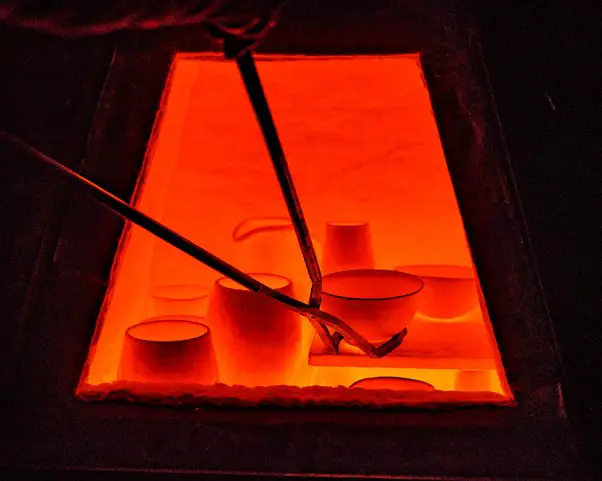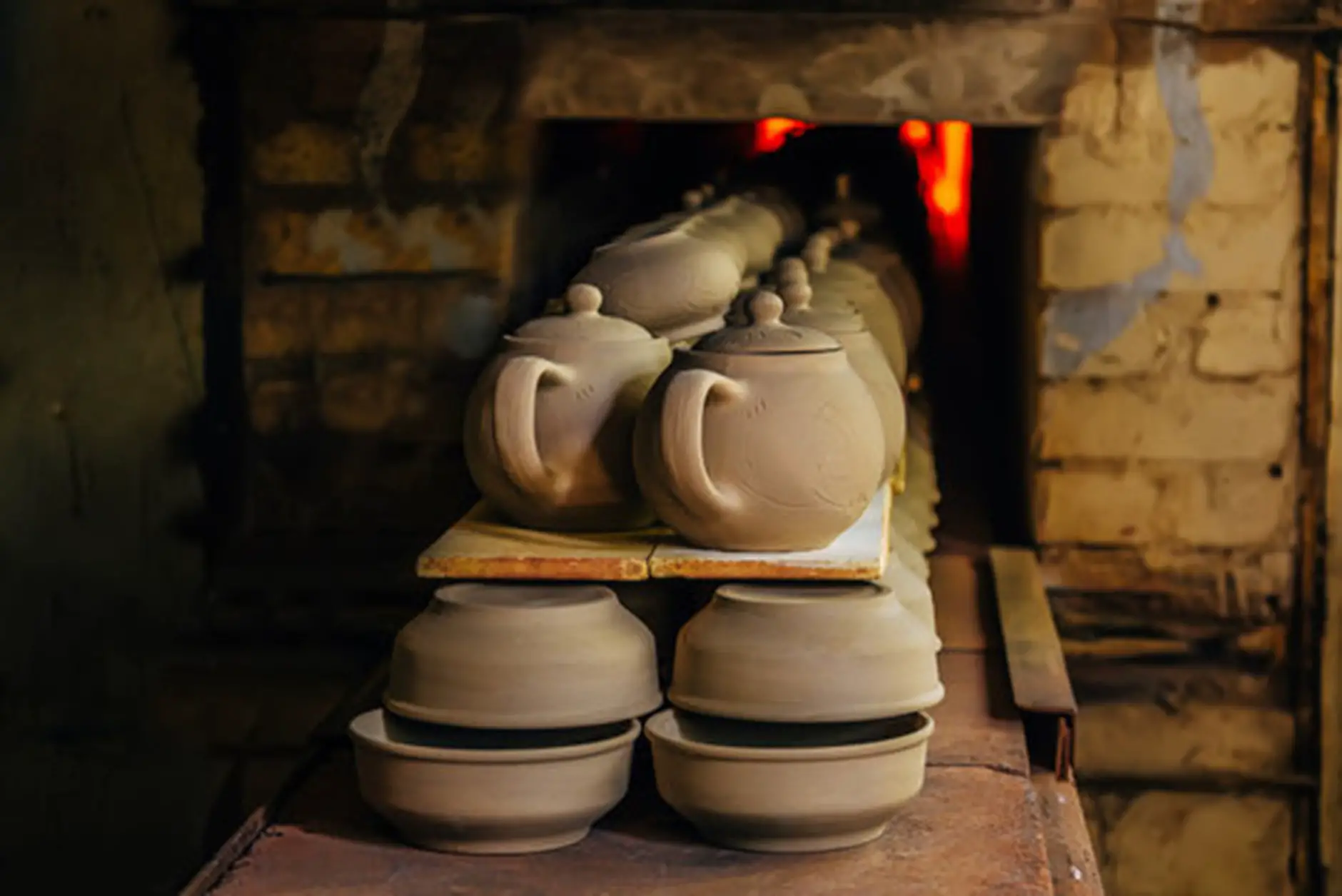Since many believe they need a pottery wheel, a kiln, or other tools to create pots, those who want to start learning pottery may get discouraged. However, in reality, you may do your first pottery projects with just a lump of clay and your ideas.
Since kilns are costly, need a lot of room, and might not be financially feasible, you may use various techniques to make your clay stronger. Without a kiln, you will have the opportunity to try multiple methods and discover what you can produce. You can still utilize clay for crafts like sculpting or jewelry.
So, to help you create fantastic pottery, this article details the results of not firing your clay. It will also discuss techniques that you can utilize to make pottery without fire or to fire clay without a kiln. Let us get started.
Why Do You Need To Fire Clay?
Clay is changed by firing from its original, soft state into a new, resilient material like ceramic. Clay and glaze are heated to a high temperature during firing. Clay is burned in a kiln to eliminate chemically-bound water and impurities. Because of this, the clay undergoes a permanent transformation that makes it more robust yet sufficiently porous to absorb glazes.
The ultimate goal is to heat the piece until the clay and glaze are heated to the ideal temperature. Usually, this procedure is completed in two phases. The first is a bisque fire, while the second is a glaze firing. The bisque firing method is usually done on clay as the first firing stage. After bisque firing, the clay is painted or glazed and fired in a kiln.
Ceramics are hard and resilient, and they resemble stone in certain respects. Pottery lasts longer, even thousands of years when fired at the right temperature. A kiln often supplies the high temperature required to turn soft clay into hard ceramic.
What Happens If You Don’t Fire Clay?
The strength and durability of clay will be reduced if it is not fired. It will become brittle and vulnerable to getting shattered quickly. Without a fire, in whichever shape you give it, clay solidifies into dry clay. The clay will get hard, but it won’t stop the elements. It could quickly get wet when there is too much water around.
If the clay becomes wet, it will eventually collapse into a muddy lump when it takes up enough water. On the other hand, firing removes the molecular water in the clay, making it hard and solid. Once fired, it will not take up water, preventing the chances of getting wet and being vulnerable to shattering.
Unfired clay will be considerably more brittle than fired clay. It implies that any object that is not wholly glazed will be particularly breakable. Working with unfired clay may be challenging as well. It could be difficult to prevent your piece from collapsing or taking on an unwanted form because it will be softer and stickier.
Can You Use Clay Without Firing?
You cannot make pottery from clay that has not been fired. The clay must be fired to solidify and become usable after being rolled out and formed into the appropriate shape. Your clay will always be flexible and soft if you don’t fire it.
However, you can sometimes use clay without firing. There are different types of clay available that you can work with without firing it in a kiln. Unfired clay is known as greenware. Air dry and epoxy clay do not require a kiln and dry to a solid structure. Usually, air-dry clays will eventually get harder on their own.
Most air-dry clays don’t need costly kilns or other specialized equipment. Instead, armatures may use air-dry clays to reinforce the sculpture. However, because they are not as robust or long-lasting as fired clay, they are not appropriate for use in pottery.
How Can You Make Unfired Clay Strong?
Clay that has not been fired is fragile, brittle, and wet and would break if dropped. Unfired clay is just dried mud and has very little value or utility.
However, you can follow some of the methods mentioned in the table below to make your clay strong without using fire.
Method |
Procedure |
Glue Coating |
Unfired clay would require some protective covering to prevent it from breaking eventually if you intend to preserve it without firing it.Applying a thick layer of adhesive to the clay body is one alternative. You may think about painting once the adhesive has dried.This procedure would protect it better than unfired clay. Although the clay would be partly protected, you would still need to be extremely careful not to knock it over or drop it. |
Bisque Firing |
Bisque firing unfired clay is an additional method of protection. Don’t paint or glaze the clay; simply burn it as is.You would receive the clay’s natural hue depending on the type of clay you used. It would appear unfired, maybe maintaining the appearance you are going for. |
Mixing Your Own Clay |
To make clay stronger, you would need more materials to be added to it. You can make it more robust using hay, straw, and other materials. However, they are incredibly thick.Another approach is to combine cornstarch and baking soda to create a substance close to clay. It may be molded into whatever form you like. |
Using Air-Dry Clay |
It is a malleable, strong clay that is lightweight and simple to work with. It would be ideal for producing jewelry or for projects for school.Additionally, air-dry clay has the wonderful property of drying in just 24 hours. It can also be painted to make it strong. By applying numerous coats of acrylic paint to your clay body, you might be able to offer it extra protection. |
Can You Fire Clay Without A Kiln?
You can fire clay without a kiln using various techniques. It may be helpful to pre-dry your clay pieces in a kitchen oven to 190 degrees Fahrenheit when firing without a kiln. The pots are dried in a kitchen oven by repeatedly baking at or below water’s boiling point. You can use some devices as alternatives to a kiln.
Some of the devices are detailed in the table below.
Device |
Procedure |
Microwave Kiln |
For firing clay at home, several microwave kilns are explicitly made for this purpose. The purpose of microwave kilns is to fuse tiny bits of glass to create jewelry and small decorations.However, many small-scale potters also employ them to fire clay fragments. |
Charcoal Grill |
Using a typical charcoal grill used for a BBQ, you can fire clay at home. Lighting the grill as you usually would is the first step. It entails igniting the charcoal and allowing it to heat up.Placing your pans close to the embers is a good idea as the coals heat up. It will facilitate the slow heating of the clay. Avoid getting the clay too hot as it can crack due to thermal shock. |
Pit Fire |
Pit firing entails excavating a hole in the earth and putting flammable material inside. The combustible material is arranged around the pottery, and the fire is lit.This technique works well for unglazed pottery and has a natural appearance, but it may also be applied to glaze if necessary. A well-ventilated space that is distant from other flammable objects is essential for pit firing. |
Do You Have To Fire Sculpting Clay?
Whether you have to fire sculpt clay or not will depend on the type of clay you use. Self-hardening clays, commonly known as non-firing, air-hardening, or air-dried clays, are recommended not to fire in a kiln. Their formulae are the same as a ceramic clay body with an additional component, cornstarch, which hardens them.

You cannot use them to form functional pottery pieces like utensils to store food or leave them exposed to external climatic conditions. Since it cannot hold liquid without sealing the porous interior surface, you cannot use it for storing food items. They are not a substitute for kiln-fired clay and can only be used to make decorative display items.
Clay will ultimately solidify and become hard on its own if you don’t fire it, but it may take months or years, depending on the size. Additionally, the outcomes are erratic. Your clay can fracture, bend, or deform in unanticipated ways.
Can You Make Clay Pottery Without A Kiln?
You can do clay pottery without a kiln. Therefore, don’t worry if you lack a kiln. You can make magnificent works of art if you are patient and cautious. Your clay pots can either be air-dried or low-fire dried. The most popular method for drying clay pots is air drying. It is easy to accomplish and doesn’t need any special tools.
However, your pot may need to air dry for days or weeks. Once it has dried, it will be quite fragile and must be handled carefully. Clay pots may be dried using a low-fire technique that generates only a little heat. This method is quicker than air drying, but you must not overheat your bank. It will become exceedingly fragile and maybe even fracture if you do.
In general, you can only deal with earthenware since it is a low-fire bisque that works for you, and different types of clay are burnt to different levels. Even though they take longer and have a greater danger of breaking, you may still experiment with clay without using a kiln.
You should be okay if you have room, know how to put out a fire, and understand the fundamentals of fire safety. Additionally, there are several great kilns that you can test out if you’re interested in pursuing this further.
Does Clay Need To Be Fired Before Glazing?
Though you don’t necessarily need to fire your clay before glazing, it’s best to avoid doing so unless you have dealt with unfired clay before. Glazing unfired clay is done by particular potters as well. Just be more cautious with your decisions if you take this course. If you decide against firing your clay first and instead prefer to glaze it, there are a few things to consider.
After the initial fire, glazing is often done. The first fire, known as a bisque firing, permanently hardens the clay while leaving it sufficiently porous to take glazes. Once the bisque ware has been decorated, you can refire it using underglazes, glazes, or both. Be extra cautious while handling your piece; remember that it will be more fragile than fired clay.
A single firing option is also available for the pottery. Single firing is the process used to create greenware, which is unfired clay. Greenware that has been glazed is appealing for many different reasons. When used on greenware, glazes with a lot of clay perform better. Because of the high clay content, the ice is more prone to shrink and flake off when applied to bisque pottery.
Since the bisque firing stage is skipped with single-fire pottery, you can create pottery quickly, saving time and effort. And it is why many pieces of industrially produced pottery are completed within a single-fire operation. You can consider getting the GONGYI Propane Melting Furnace Kit, an affordable and effective option for kilns for pottery.
End Thoughts
Clay work without fire may be entertaining and gratifying if you don’t mind your creations being less durable. Thus, avoiding using unfired clay to create valuable products and shielding it from the weather is best.
It is delicate and will quickly chip or break if it is dropped or bumped into anything solid. Also, if the clay is damp after not being burned, it will lose its shape. Hence, unfired clay is of minimal practical value.
Firing is a vital phase in creating ceramics as it marks the transition of clay from fragile clay to usable ceramic. You can effectively increase the strength and durability of your sculptures by firing the clay.








